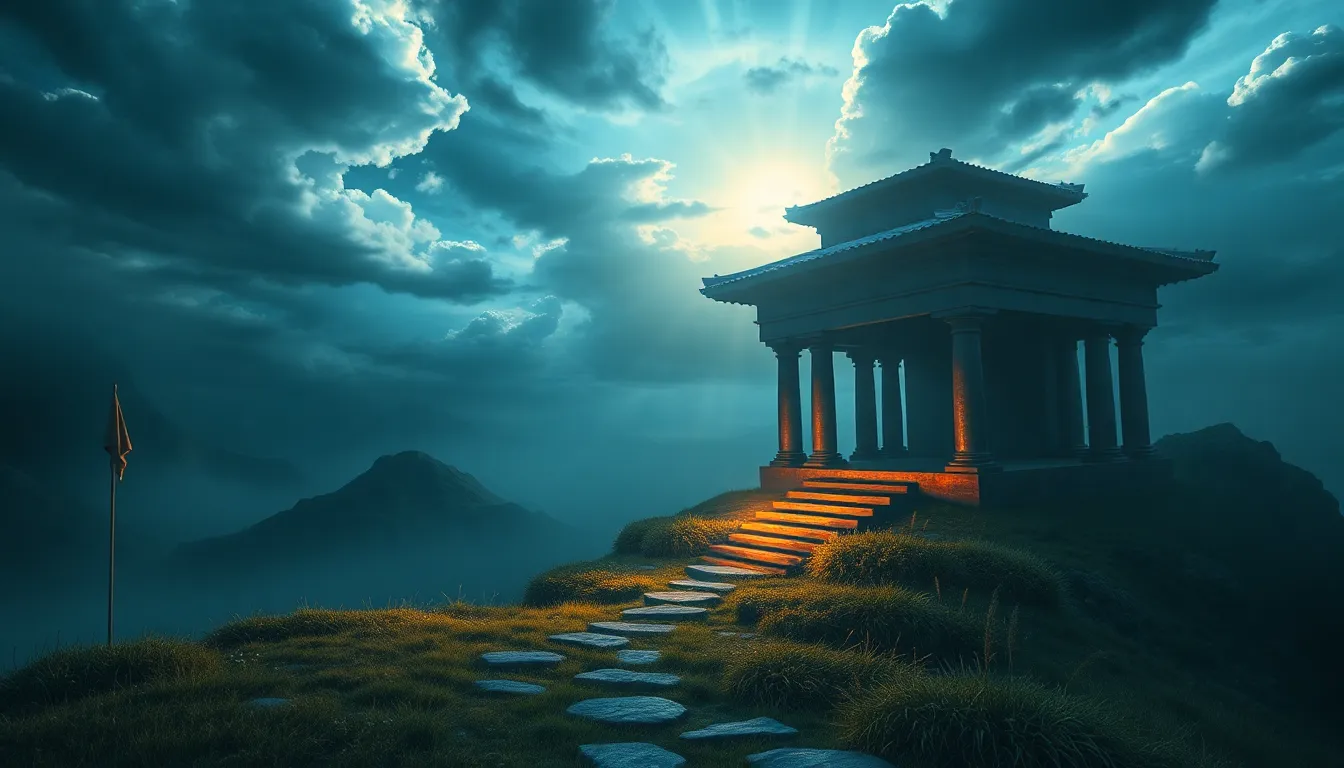The Sacred Pathways: Journeys Through Mythological Landscapes
Introduction to Mythological Landscapes
Mythological landscapes are the imaginative realms that embody the beliefs, values, and narratives of various cultures throughout history. These landscapes often serve as the backdrop for heroic quests, spiritual awakenings, and profound transformations. The journeys undertaken in these realms reveal the significance of exploration, both within and outside oneself, as they resonate with our innermost fears, desires, and aspirations.
In this article, we will delve into the concept of sacred pathways as they appear in different cultures, the symbolism inherent in mythological landscapes, and how these narratives shape our understanding of heroism and personal growth. We will explore the intersection of myth and reality, particularly in modern pilgrimages, and the psychological dimensions of these journeys.
The Role of Sacred Pathways in Different Cultures
Sacred pathways are often seen as routes to enlightenment, healing, or transformation in various cultural contexts. They serve as metaphors for the inner journey of self-discovery and spiritual awakening. Across cultures, these pathways can take many forms, from physical trails to abstract spiritual journeys.
- Eastern Mythologies: In Hinduism, the concept of ‘Tirtha’ represents sacred crossings or pilgrimage sites, where devotees seek spiritual merit and connection with the divine.
- Western Mythologies: In Christianity, pilgrimage routes such as the Camino de Santiago symbolize a journey towards spiritual fulfillment and divine grace.
Pilgrimage plays a crucial role in spiritual practices worldwide, providing individuals with a tangible means to connect with their faith and heritage. It serves as an opportunity for reflection, renewal, and community bonding.
Mythological Landscapes and Their Symbolism
Mythological landscapes are rich in symbolism, often representing different aspects of the human experience. Common landscapes include:
- Mountains: Symbolizing spiritual elevation and the quest for enlightenment.
- Rivers: Representing the flow of life, change, and the passage of time.
- Forests: Often embodying the unconscious mind, mystery, and the interplay between civilization and nature.
These landscapes reflect inner human experiences, serving as metaphors for our struggles, aspirations, and transformations. They invite us to explore not only the external world but also the landscape of our own psyche.
Hero’s Journey: Archetypal Pathways in Myth
Joseph Campbell’s concept of the Hero’s Journey outlines a universal narrative structure found across cultures. This framework consists of stages that heroes undergo, including:
- Call to Adventure
- Crossing the Threshold
- Trials and Challenges
- Transformation
- Return with the Elixir
Examples of mythological heroes, such as Odysseus from Homer’s “The Odyssey” or Gilgamesh from the Sumerian epic, illustrate these transformative journeys. These narratives not only provide entertainment but also shape modern storytelling, influencing literature, film, and even personal narratives.
Sacred Pathways in Indigenous Mythologies
Indigenous cultures often possess a profound connection to the land, viewing it as sacred and imbued with spiritual significance. Sacred pathways in these traditions serve as physical and spiritual routes that connect communities to their ancestors and the cosmos. For instance:
- The Dreamtime stories of Australian Aboriginal peoples illustrate how landscapes are woven into their spiritual identity.
- The Native American concept of the “Medicine Wheel” reflects the interconnectedness of life and the cyclical nature of existence.
These indigenous myths emphasize the relationship between nature, spirituality, and identity, highlighting the importance of maintaining a harmonious connection with the earth.
The Intersection of Myth and Reality: Pilgrimages and Modern Journeys
Modern-day pilgrimages are often inspired by mythological narratives, serving as a means for personal transformation and spiritual growth. Popular pilgrimage routes include:
- Camino de Santiago: A historic pilgrimage in Spain that invites individuals to reflect on their spiritual journey.
- Kumbh Mela: A major Hindu pilgrimage where millions gather to bathe in sacred rivers, believed to cleanse the soul.
These journeys evoke a sense of community, purpose, and personal discovery, reminding us that the sacred pathways of the past continue to resonate in contemporary society.
The Psychological Aspects of Mythological Journeys
Carl Jung’s theories on mythology and the collective unconscious highlight the psychological significance of mythological landscapes. He believed that myths serve as a mirror for our inner lives, allowing us to confront our fears and desires.
Mythological journeys can be seen as metaphors for life’s challenges, providing frameworks for understanding personal growth. They invite individuals to embark on their own hero’s journey, facing trials and ultimately emerging transformed.
Art and Literature: Representations of Mythological Landscapes
Art and literature have long been influenced by mythological journeys, capturing the essence of these sacred pathways. Notable works include:
- Dante’s “Divine Comedy”: A profound exploration of the afterlife, reflecting the journey of the soul through Hell, Purgatory, and Paradise.
- Tolkien’s Middle-earth: A richly constructed fantasy world that draws heavily from mythology, embodying themes of heroism and moral courage.
These representations not only reflect the cultural significance of mythological landscapes but also inspire contemporary artists and writers to explore similar themes in their own works.
Contemporary Relevance of Sacred Pathways
In today’s society, mythological landscapes continue to resonate, offering insights into modern existential questions. They provide frameworks for understanding our place in the world and inspire personal and communal journeys. As individuals seek meaning and connection in an increasingly fragmented world, these sacred pathways remind us of our shared humanity and the timeless nature of our struggles and aspirations.
Conclusion: The Enduring Power of Mythological Journeys
Mythological journeys and sacred pathways are more than mere stories; they embody the essence of human experience. They invite us to explore the depths of our psyche, connect with the divine, and embark on transformative quests. As we continue to navigate the complexities of modern life, the lessons embedded in these ancient narratives remain relevant, guiding us on our own sacred journeys.


